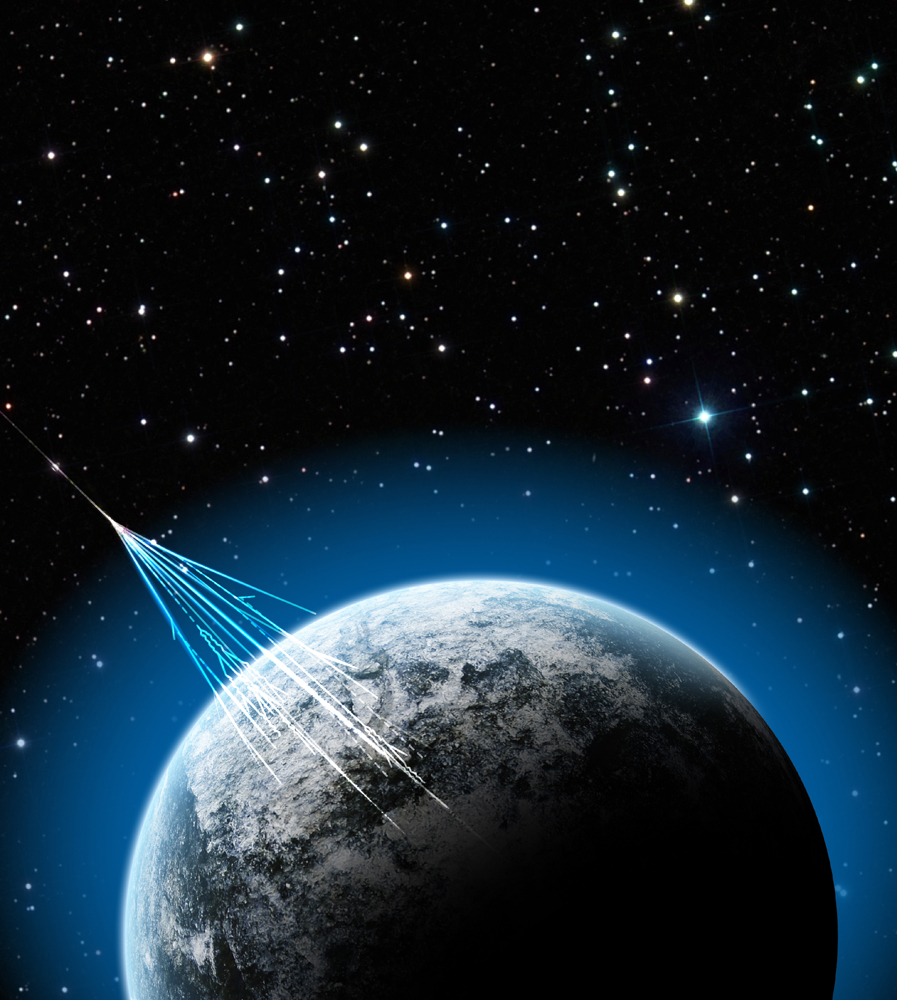Space Radiation May Accelerate Alzheimer's in Astronauts

Radiation in space might harm the brains of astronauts in deep space by accelerating the development of Alzheimer's disease, a new study on mice suggests.
The research reveals another risk that manned deep-space missions to places such as Mars or the asteroids could pose, scientists added.
"This study shows for the first time that exposure to radiation levels equivalent to a mission to Mars could produce cognitive problems and speed up changes in the brain that are associated with Alzheimer's disease," study author Kerry O'Banion, a neuroscientist at the University of Rochester Medical Center, said in a statement.
Space is filled with radiation that can harm people. While Earth's magnetic field generally protects the planet, once astronauts venture beyond low-Earth orbit, they are constantly bombarded by a shower of dangerous particles known as cosmic rays. The longer an astronaut is in deep space, the greater the risk, which is especially of concern given NASA plans for manned missions to an asteroid in 2025 and to Mars by about 2035 — the round trip to the Red Planet alone could take at least two years.
For more than 25 years, NASA has funded studies to see what the potential dangers of space travel might be. For instance, past research analyzed the potential impact of cosmic rays on the risk for cancer and potential problems with the cardiovascular or musculoskeletal systems.
Now scientists have for the first time examined the effects space radiation might have on neurodegeneration — in particular, the biological processes in the brain linked with the development of Alzheimer's disease, which typically involves progressive mental decline over several years. They found "galactic cosmic radiation poses a significant threat to future astronauts," O'Banion said. [Inside the Brain: Photo Journey Through Time]
Perils of space radiation
Sign up for the Live Science daily newsletter now
Get the world’s most fascinating discoveries delivered straight to your inbox.
O'Banion and his colleaguesinvestigated a specific kind of space radiation known as high-mass, high-charged (or HZE) particles. These particles zip through space at very high speeds, likely the result of exploding stars and other deep-space catastrophes from elsewhere in the galaxy. Unlike cosmic rays consisting just of hydrogen nuclei, which solar flares generate, the mass and speed of HZE particles allow them to punch through solid objects such as a spacecraft, or any astronauts inside.
"Because iron particles pack a bigger wallop, it is extremely difficult from an engineering perspective to effectively shield against them," O'Banion said. "One would have to essentially wrap a spacecraft in a 6-foot (2 meters) block of lead or concrete."
The scientists focused on the impact of iron HZE particles generated by particle accelerators at the NASA Space Radiation Laboratory at Brookhaven National Laboratory in New York. Mice were dosed throughout their body with levels of radiation comparable to what astronauts might receive during a mission to Mars.
The mental function of the mice was tested with a series of experiments — for instance, they had to recognize places linked with unpleasant electric shocks to their feet — and rodents dosed with radiation were far more likely to fail at these tasks. The brains of the mice also showed signs of inflamed blood vessels, and possessed abnormally high levels of beta amyloid, a protein that accumulates as one of the hallmarks of Alzheimer's disease.
"These findings clearly suggest that exposure to radiation in space has the potential to accelerate the development of Alzheimer's disease," O'Banion said. "This is yet another factor that NASA, which is clearly concerned about the health risks to its astronauts, will need to take into account as it plans future missions."
Hollywood couldn't concoct a story more intriguing than that of the Titanic. With many details of the sinking still shrouded in mystery, we test your knowledge of what really went down the night of April 14, 1912.
Titanic Quiz: Fact or Fiction

It remains uncertain why these HZE particles might have this effect on the brain.
"This is, of course, the $10 million question," O'Banion told SPACE.com. The fact the researchers saw a blood vessel response, but not clear evidence of brain inflammation "suggests the possibility that the radiation effects are actually in the body of the mice, and that changes there might be affecting amyloid deposition."
O'Banion did caution "we gave the radiation all at once — the mice experienced over a few minutes what astronauts will experience over three years. We have no idea whether the biological effects of HZE particles will be the same when given at low dose rates. Many would argue that ours is a worse-case scenario, and that the changes are likely to be entirely different since the body might adapt to small chronic dosing."
In the future, O'Banion and his colleagues will examine the effects the brain experiences from exposure to radiation elsewhere in the body. They also plan to see whether space radiation might influence development of Parkinson's disease.
"I would add that there are at least three other laboratories pursuing similar studies," O'Banion said. "The nice thing about this is that we will soon know if our results hold up in other labs."
The scientists detailed their findings online Dec. 31 in the journal PLOS ONE.
This story was provided by SPACE.com, a sister site to Live Science. Follow SPACE.com on Twitter @Spacedotcom. We're also on Facebook & Google+.

Tariq is the editor-in-chief of Live Science's sister site Space.com. He joined the team in 2001 as a staff writer, and later editor, focusing on human spaceflight, exploration and space science. Before joining Space.com, Tariq was a staff reporter for The Los Angeles Times, covering education and city beats in La Habra, Fullerton and Huntington Beach. He is also an Eagle Scout (yes, he has the Space Exploration merit badge) and went to Space Camp four times. He has journalism degrees from the University of Southern California and New York University.










